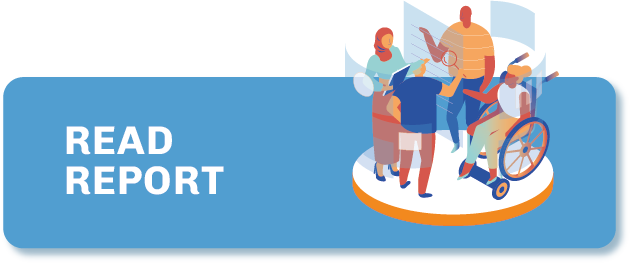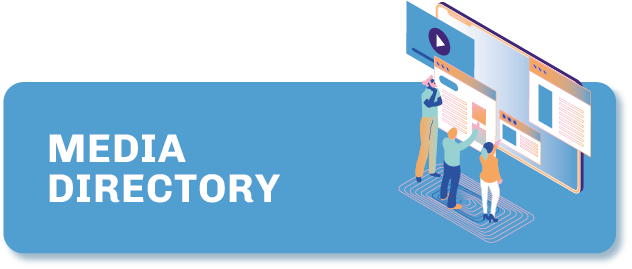Malta
There are a limited number of independent digital native media outlets in Malta. This is partly due to the country’s media landscape; political party-owned media outlets dominate this small market. Trying to break this stranglehold on the country’s public discourse feels extremely difficult, especially when the handful of independent media organisations available in Malta must operate within a polarising environment and with limited resources.
Nevertheless, the media organisations interviewed for Project Oasis are starting to make headway, largely thanks to the quality of their work and a growing local and international support network.
GENERAL INFORMATION
Press
freedom
ranking
Internet
penetration
POPULATION
Media organisations
in the Directory
TYPE OF COVERAGE

TYPE OF ORGANISATION

GENDER OF FOUNDERS

Press freedom
In Malta, journalists must cope with a highly polarised environment strongly influenced by political party media, notes Reporters Without Borders. The overall attitude of most government officials towards independent journalists ranges from non-responsive to openly hostile.
Malta’s press freedom ranking plummeted in 2017 following the assassination of Maltese investigative journalist Daphne Caruana Galizia. The journalist was killed by a car bomb a few metres outside her home on 16 October 2017. Her blog, which enjoyed a vast readership, reported on alleged corruption by top Maltese politicians and businessmen. At the time of her death, she was collaborating with the International Consortium of Investigative Journalists on investigations sourced from the Panama Papers. A public inquiry into her death found the state “should bear the responsibility for the assassination” and went on to list a comprehensive set of reforms including steps to better protect journalists. The government however has been reluctant to implement these recommendations, note civil society groups.
To date, Malta’s governing party exerts considerable influence on the country’s public broadcaster. A study published in 2021 by the CEU Democracy Institute’s Center for Media, Data and Society classified Malta’s public broadcaster as “state-controlled”. Accessing information in the public interest is also problematic, as was noted in the recommendations of the Daphne Caruana Galizia public inquiry, which underscored how public bodies regularly deny freedom of information requests from the media on arbitrary grounds.
Market structure and dominance
Malta is unique among European Union member states in that the two main political parties in its House of Representatives own, control and manage their own media enterprises, which include TV and radio stations as well as print and online outlets. As a result, the government dominates the public sphere through media ownership and advertising spending, according to the Monitoring Media Pluralism in the Digital Era (MPM 2022) report by the Centre for Media Pluralism and Media Freedom.
This dominance is countered by a limited number of independent media outlets such as the Times of Malta, The Malta Independent and MaltaToday. Although it is relatively easy to launch a media outlet in the country, the market offers limited funding sources for independent media organisations. Online news platforms are the most widely used media sources, followed by social networks and television, which have been the preferred platforms in recent years.
How media is funded
Advertising revenue remains the primary source of revenue by far. Much smaller sources of revenue include subscriptions, grants, affiliation fees and sales of print titles. Advertising revenue decreased significantly during the pandemic. The government intervened with direct and advertising support for part of the pandemic, but this was subsequently discontinued. However, this aid also caused several issues, since some independent media outlets argued that the package was designed so that the politically owned media organisations benefited the most.
The government is still considered the most prominent advertising client of most Maltese media outlets. In a dissertation by the academic Norman Vella exploring the journalistic profession, editors described the government as “the biggest advertiser in the Maltese media market”, but some added that public advertising money was distributed “in an arbitrary and abusive way”, with one editor confirming to researchers that there were instances when adverts were withheld because they were being “too critical of government”.
This problem has been repeatedly flagged by international organisations such as UNESCO and the Council of Europe, which stress the need for transparency and objective criteria for state funding of the press. In the last interview before her assassination, Daphne Caruana Galizia described how the editors of The Malta Independent, where she wrote her weekly column, were frequently told to fire her and get advertising in return.
Whilst funding exists for non-profit and even for-profit media organisations, there are limited opportunities for the media sector. Non-profit organisations covering topics such as the environment, journalism, immigration, poverty and others generally rely on donations, some element of government support and the work of volunteers.
With Malta being such a small country, coupled with how party-owned media organisations and funding by the government dominate much of the media landscape, finding relevant independent digital native media outlets that fit Project Oasis’ criteria proved challenging.
Portions of this already small pool of independent digital media outlets in Malta are either part of legacy publications, such as the Times of Malta, or were “print-first”, such as The Malta Independent and MaltaToday. Political parties or church entities own other more recent digital native outlets. And while a couple of blogs in Malta have a strong following owing to their anti-corruption activism, their content consists primarily of commentary.
Four profiles of digital native media organisations from Malta are included in the directory. This includes three profiles based on interviews and one profile based on desk research. Three of the media outlets focus on areas of coverage that continue to garner attention such as human rights, media freedom, environmental and planning issues, activism and corruption. The fourth outlet also covers these topics, but its coverage also encompasses sponsored content and more generic news content.
All of these outlets use various social media tools to help share content and engage readers in new ways. For example, The Shift and JournalismPlus use newsletters to share insights or previews of upcoming projects. All the media outlets use Facebook to share their stories, as Facebook remains the most popular social media platform in the country. The most important sources of funding for The Shift, the Daphne Caruana Galizia Foundation and JournalismPlus are international grants and reader donations.
The challenges of independent digital native media outlets in Malta are numerous. Trying to break the stranglehold of political party-owned media on the country’s public discourse feels extremely difficult, especially when independent media outlets must operate within a polarising environment and with limited resources. In spite of this, digital native media organisations are making some headway within the country’s media landscape, thanks in large part to their persistence as well as growing local and international support.
Last updated: December 2022
CREDIT FOR STATISTICS: Press Freedom statistics, RSF Press Freedom Index 2022; Internet penetration and population statistics, from Internet World Stats

